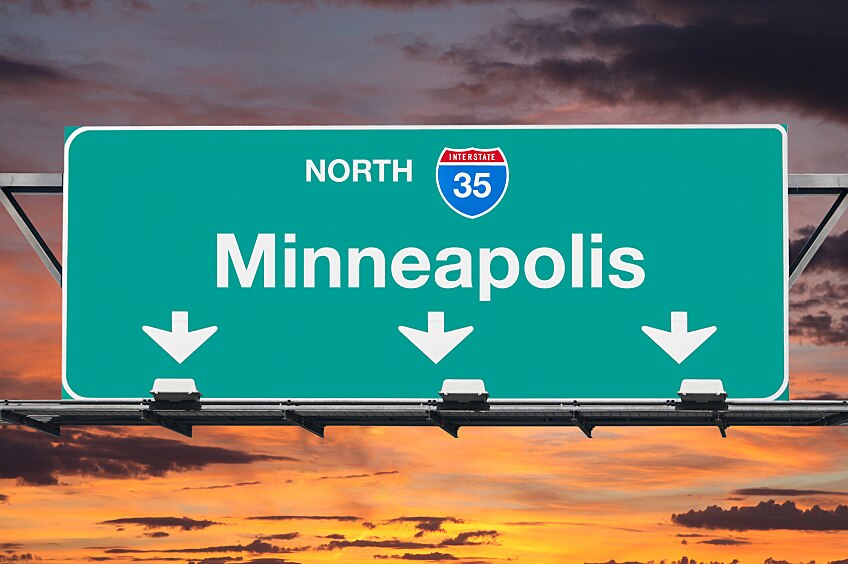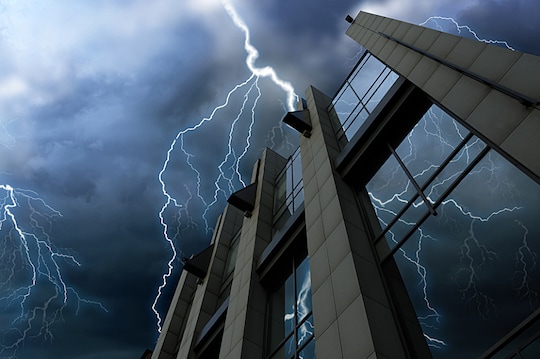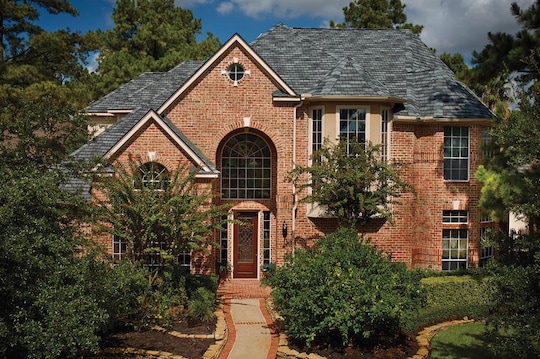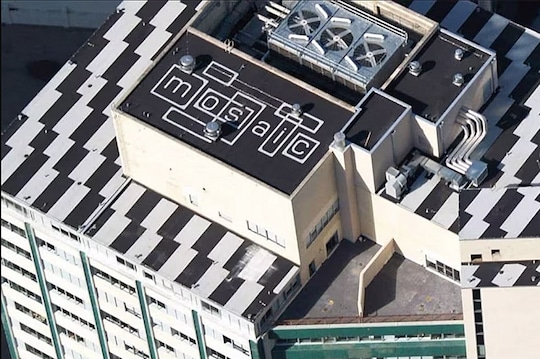
Dark Roof's Summer Cooling Penalty is a Deciding Factor
Cool roofs reflect the sun's energy and reduce air conditioning loads in the summer - so do dark roofs absorb energy in the winter and reduce heating costs? In northern regions where heating costs are significant, can dark roofs be energy efficient? Some building professionals specify dark absorptive membranes for northern cities like Chicago and Minneapolis believing that they are lowering their clients' heating costs and lowering year-round energy costs. An analogy, only slightly tongue in cheek, would be to ask if Chicagoans walking along Michigan Avenue in the winter wear dark clothes to stay warmer? Or do dark colored cars outsell light colors in the Windy City? So, do dark roofs help improve building energy efficiency in northern cities? Let's take a look at the arguments.
Heating Degree Days versus Cooling Degree Days
There is no doubt that heating degree days in northern areas are far greater than cooling degree days. Par exemple :

This means that the number of days the temperature was below 65°F multiplied by how many degrees the temperature was lower, was 9,317. This far outnumbers the cooling degree days and some have argued that therefore dark roofs are appropriate for northern cities such as Minneapolis. However, it's important to examine the cost of cooling versus the cost of heating.
Energy Costs
Data from the U.S. Energy Information Administration for commercial customers in Minnesota in 2015 allows us to compare the cost of heating versus cooling. Assuming gas as the energy source for heating:
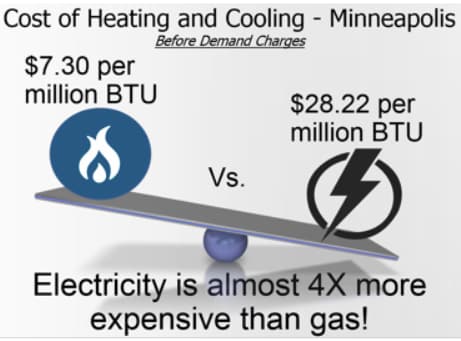
Added to this, cooling is less efficient than heating. This means that one can't simply compare the number of heating versus cooling degree days to make a judgment.
Verdict
Degree day comparisons don't enable a choice of roof reflectivity to be made. Put simply, neither EPDM nor TPO / PVC can be specified on the basis of the number of heating degree days versus those of cooling degree days.
Cooling versus Heating Costs
Heating — Gas Costs
Natural gas is becoming ever more plentiful in the U.S. and costs are fairly stable meaning that heating costs can generally be budgeted for with confidence. Added to that, utilities usually charge commercial customers a flat amount per cubic foot used. Frequently, volume discounts apply and larger customers pay less per BTU of heat than smaller ones.
Cooling — Electricity Costs
Today's electric bills, especially for commercial and industrial customers, are fairly complex. However, the basic components are as follows:
- Base Use Rate — the charge per kilowatt hour (kWhr) of energy use.
- This is common for residential but rare for commercial customers.
- Can vary depending on the time of year, e.g., summer versus winter.
- Time of Use Rate — the charge per kWhr of energy use that varies depending on the time of day or year.
- This is increasingly applied to commercial customers.
- The rate is highest during times of peak demand, such as between 1 and 6pm. It is lowest during periods of low demand, such as 3 to 6am.
- If the rate varies by time of year, then summer rates might be highest, when air conditioning use is at its highest.
- Demand Charge — the cost per kilowatt (kW) of power demand.
- The charge applies to the highest demand that a customer had for power at any time during a month.
- To help understand the concept, think of how fast an electric meter is spinning when a lot of equipment is turned on and the air conditioning is running at maximum load. This might be the situation for a short period of time, so energy use could be low, but the power demand could be very high for that short period.
- It is typically based on the highest power draw seen in 15 minute increments during a month.
All of these components make building electric charges difficult to predict and budget for. Plus, unlike for gas, higher usage levels can dramatically increase the cost of that energy. Most building professionals clearly understand the impact of the base electric rate or tariff and time of use rates. It is easy to appreciate that lowering air conditioning demand will reduce electric bills. However, those tariffs frequently represent 50 % or less of a total electric bill with the demand charge being 50 % or larger. By understanding the impact of air conditioning on demand charges, it can be seen that cool roofs have a large role to play impacting building energy efficiency.
Demand Charges
A simple way to think of demand charges versus energy use is to look at an electric meter:

In a traditional residential meter shown on the left, the upper dials keep track of the cumulative energy use. The lower wheel shows the demand by how fast it is spinning. A more modern or small commercial meter shown on the right displays the same data in a digital fashion.
As an air conditioner does its work during a month, the energy use is added up, leading to an eventual charge based on kilowatt hours. But, on the hottest day of that month, during an afternoon period when the sun was at its highest and creating a higher thermal load through the roof and walls, the air conditioner will be operating at a high load. Therefore its "demand" for power will spike, and that spike will result in a charge per kW. Even if that spike is for just 15 minutes, that demand charge could be >50 % of the monthly bill. Let's look at a small office building to better understand this:
The customer has a 2-ton air conditioner that draws 7,2kW at maximum load. Each month it runs at an average 50 % load for 10 hours a day with an electric charge of 0,09 $0/kWh. That results in a monthly charge of 10 hours x 30 days x 7,2kW x 50 % x 0,09 $0/kWhr = 97,20 $.
But, on a sunny day during that same month, the air conditioner might run at maximum load for 15 minutes, triggering a demand charge of 15,00 $ / kW. The resulting demand charge would be 7,2 kW x 15,00 $ / kW = 108,00 $.
In this example, the demand charge is larger than the use charge. Since dark roofs increase the need for air conditioning, they not only drive up monthly electricity consumption costs, they can significantly increase demand charges, as well. A cool roof, on the other hand, reflects heat away and helps reduce both monthly consumption and demand charges.
Verdict
Not only is electricity more expensive than gas, but the rate structures are complex. Seemingly small increases in electricity use can result in large additional costs due to the compounding effects of time of use rates and demand charges. Cool roofs lower a building's energy use, thereby lowering operating costs. However, overall electric use is often only 50 % of the electric charge, and the maximum power draw and its demand charge can represent the other half. Cool roofs lower the internal temperature rise on hot sunny days and therefore lower the load on air conditioning equipment.
Location Doesn't Matter!
As the following data indicates, it doesn't matter where a building is located; if it uses air conditioning then converting to a cool roof will result in savings.
Let's compare buildings in the northern, southern, eastern, and western U.S. The basic assumptions are:
| Dimensions : | 100 000 sq.ft. |
| Electric use cost: | 0,09 $0 / kWhr |
| Electric demand cost: | 15,00 $ / kW |
| Gas cost: | 0,80 $ / therm |
To make the calculations conservative, we assumed a high insulation level of R-30, a heater efficiency of 80 %, and an air conditioner coefficient of performance of 3.2. Using the Cool Roof Calculator tool, we estimated the impact of converting from a dark roof to a reflective membrane in the following locations:
| Region | Ville | Économies |
| Southern USA | Houston, TX | 5 200 $ / yr |
| Northern USA | Minneapolis, MN | 2 600 $ / yr |
| Western USA | San Francisco, CA | 2 400 $ / yr |
| Eastern USA | Raleigh, NC | 4 100 $ / yr |
Verdict
In warm and hot regions, cool roofs provide for larger energy savings; however, even in more moderate and even northern climates, cool roofs improve a building's energy efficiency. Modeling shows this to hold true so long as a building uses gas to heat and has air conditioning.
Will a Cool Roof Always Result in Actual Cost Savings?
There are a few reasons why some may not receive lower electric bills after converting to cool roofs. For example, overall electric costs may rise year over year or the utility rate structure could change. Also, changes in the building's use, equipment, or operating patterns could increase overall lower consumption. Suffice to say, modeling shows that cool roofs reduce the impact of solar energy on a building, and several case studies have demonstrated reduced utility bills. But, each building is unique and should be evaluated on its own terms.
